Randwick Petersham World War II - The Silent Heroes
Randwick Petersham Cricket Club | April 24, 2023

Marrickville DC
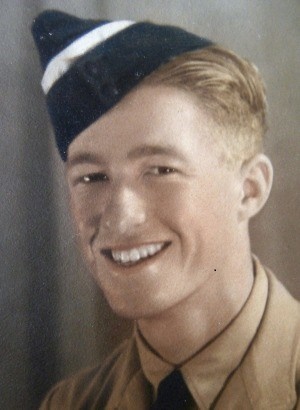
William Sidney CREBER was born on 24 February 1924 at Summer Hill. Aged just 13, he joined Marrickville DCC in 1937-38 and played in the club’s A W Green Shield under 16 team. He scored just 17 runs in his three innings that season and fared little better the following summer totalling 70 in five trips to the crease. However, his off-field keenness in undertaking scoring duties for the Poidevin-Gray under 21 team was quickly over-ridden by his on-field performance in a Shires match in 1938-39 where he hit a handy 41.
Two years later young Bill was making a name for himself, not with the bat however, but with the ball in 2nd Grade. A spin bowler, he was second-top wicket-taker with 23 scalps. Along with his 195 runs featuring a top-score of 57, he was clearly one of the club’s most promising all-rounders.
His progress continued and in 1941-42 he made his 1st Grade debut rubbing shoulders with the likes of Ron Saggers, Vince Collins and Les O’Brien. His future in cricket looked rosy. But it was war-time and the call was too great for Billy to resist, signing up for Army duty three days before his 18th birthday.
Bill Creber’s AIF career was however, short-lived and on 27 October 1942, just eight and a half months after donning the slouch hat, he was drafted into the Royal Australian Air Force where his skills were in keen demand for a position in the cockpit of one of the country’s fighter planes.
A little over a year and a half later and while attached to the 83 Operational Training Unit, 20 years old Flight Sergeant William Sidney Creber was killed in a flying battle in Lille, France on Saturday 20 May 1944. He is buried at St Pol War Cemetery, Pas de Calais, France.
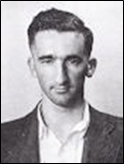
Ronald Reginald TAYLOR was born on 26 December 1919 at Punchbowl. He completed his Intermediate Certificate at Canterbury Boys High School in 1935 and took up a position as a cost clerk with a manufacturing company. A small framed man, he was just on 168 cm tall and weighed less than 60 kgs with an interest in most sports although cricket and tennis were his favourites.
Taylor joined Marrickville DCC in 1941-42 aged 21 and played the whole season in 3rd Grade. His 15 matches were the most by any player in that grade where he was the team wicket-keeper. He was somewhat of a lower order bat averaging just 6.64 for a total of 113 runs with 28 his best score. And although he is listed as a member in the annual report for the following 1942-43 season, he did not play a match.
On 5 December 1942 Ron enlisted in the RAAF as an Aircraftman and thereafter was trained as a Wireless Operator. In August 1943 he was promoted to Sergeant and six months later in February 1944 was posted to the Advanced Flying Unit, Dumfries, Scotland. Within a couple of weeks he was further promoted to Flight Sergeant but shortly after was injured and spent 11 weeks in the Dumfries Infirmary. It was reported he was riding his bicycle at night to or from the base, without lights due to blackout restrictions. He had an accident, ending up in a roadside ditch and was rescued by a woman who found him when passing by. He was hospitalised with a broken leg.
On 6 June 1944 he was posted to the Operational Training Unit, Litchfield, UK and was designated as the Wireless Operator in a newly formed Crew of 6 RAAF Airmen. The Crew was subsequently posted to Marston Moor, Yorkshire and then to 462 Squadron, Foulsham, Norfolk where he was promoted to Warrant Officer.
On 10 April 1945 the Crew were on board a Halifax aircraft as part of a Special Duties Operation to attack an enemy target at Leipzig, Germany. However, they failed to return from that operation and were reported as missing. A member of the crew who survived and was taken prisoner before escaping subsequently confirmed that the aircraft was hit by enemy fire and crashed. The result of this advice was that Warrant Officer Ronald Reginald Taylor was presumed to have died on 10 April 1945.
Three years later the Air Board, Melbourne advised that the remains of Ronald Reginald Taylor and his crew mates had been recovered and identified. They were subsequently re-interred in the British Military Cemetery in Berlin.

Colin Kelvin Flockhart was born on 1 February 1924 at Ashfield. He attended Fort Street Boys School going on to complete an accountancy course to assist him in his job with the Commonwealth Bank. Despite his youth he felt, as he later commented in a letter to his parents, he would never be content “unless I did my share” and accordingly, he joined the Australian Army on 16 February 1942, just 15 days after his 18th birthday. His parents’ consent was given.
It was later that same year the youngster joined Marrickville DCC playing seven matches in the 1942-43 3rd Grade team. It was a tentative Grade Cricket start scoring just 47 runs with 14 not out his best effort. There were 22 matches that season and it can only be assumed that his enlistment did not allow him any further opportunity to develop his cricket skills.
Being academically gifted, he was soon in demand by the Air Force and in October 1942 he switched from Private in the AIF to Aircraftman in the RAAF. He qualified as a pilot that year and early in 1943 sailed to England for operational training.
His service details from the time he joined the RAAF until January 1945 cannot be located. Suffice to say that by that time Flockhart was a Flying Officer and member of the 619 Squadron at Strubby, Lincolnshire, England.
On a mid-winter afternoon on 7 January 1945, Captain Colin Flockhart together with six other crew, took off in a Lancaster III bomber from the Strubby base detailed to bomb the German city of Munich. The aircraft was part of a strike force of 645 Lancasters and nine DH Mosquitos. However, nothing was heard from the aircraft after take-off and it failed to return to base. It was later discovered the plane disintegrated over St-Pierre, France while homebound killing all aboard. They are buried in the Villeneuve-St-Georges Old Communal Cemetery, France. The average age of the crew was just 21 years of age.
Five weeks before his death on 1 December 1944, Flockhart penned a letter to his parents which was marked “only to be opened in the event of my death”. In it he wrote “First of all let me say that I have enjoyed my Air Force service as I have enjoyed no other years of my life and I have been completely happy the whole time. I have travelled, made friendships and shared experiences which will stand me in good stead all my life, which otherwise I would probably never had the opportunity of doing. This war was inevitable and I could never have been content unless I did my share. Never regret having given me your consent to enlist."
Leonard James WALLACE, a 1st Grade captain who scored two centuries in 1933-34, was born at Marrickville on 12 August 1908. He joined the AIF on 4 June 1941 and was seriously injured in New Guinea in 1944, losing a leg when a lorry in which he was riding overturned. He made a good recovery after his discharge on 26 October 1944 however, leading a full life before his passing at Marrickville in November 1982 at age 74.
Colin BONSER was born at Moss Vale in 1920. He joined Marrickville DCC in 1942-43 having scored 1,177 runs in the Bowral and Moss Vale competitions the previous season including one innings of 225 not out. His move to Sydney Grade arose from the suspension of the Southern Highlands competitions due to the war. Bonser started in 2nd Grade but after a few impressive performances was promoted to 1st Grade where he hit a fine 62 in a total of 151 from six matches.
Although not an enlisted member of the services he was killed in a freak accident in Townsville, North Queensland on 1 March 1943 undertaking what was described in the Marrickville annual report for that season as “war work.” Using some welding equipment he attempted to brush away some annoying insects only to hit himself in the temple with the welder and died instantly from the blow. He was 23 years old.
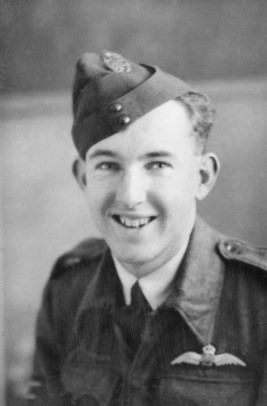
John Sydney Edward ALLWRIGHT was born at Marrickville on 28 July 1923. When he was 16 he joined Marrickville DCC and played five matches in the club’s Shires team scoring a total of 32 runs. And while he is listed as a member in 1945-46 he did not play that or any later season.
On 23 December 1941 aged 18, Allwright enlisted in the Army but just seven months later on 20 July 1942 he was discharged and the following day joined the RAAF as a Pilot Officer. Little is known about his service thereafter other than that he became a Flight Lieutenant with the 622 Squadron Royal Air Force at Mildenhall, Suffolk, England.
Operating in Bomber Command’s Main Force he was on board a Lancaster bomber in an attack on Ludwigshafen, Germany in January 1945. As a result of his actions during that attack he was awarded the Distinguished Flying Cross (DFC).
John Sydney Edward Alwright DFC was discharged on 28 September 1945 and died on 10 May 1978 at Killarney Heights surrounded by his wife and four children. He was 54 years old.
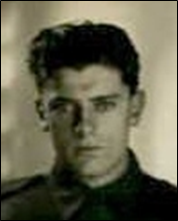
Edward Frederick BYRNE was born at Campsie on 23 May 1920. He joined Marrickville DCC in 1938-39 starting off in the Colts team where he went on to win the bowling award with 30 wickets at 13.06. His aggregate was a club record which was never broken. He also scored 273 runs with 52 his best score in a partnership of 120 with A H Davies which was a record for the Colts team and was also never broken. With such early indications of a promising career as an all-rounder, young Ted was promoted to 3rd Grade that season and had a game in 2s taking 1 - 57.
The following season Byrne continued on his development path taking out the 3rd Grade batting average with 192 runs at 32 and a top score of 85 while his 23 wickets at 20.17 won the bowling aggregate and average. In a match against Glebe he confirmed the comments in the club’s annual report that he was a “most promising medium-pace bowler” when he took eight wickets for 52 against Glebe.
The call of patriotic duty however, saw him enlist in the Australian Army on 11 July 1940 shortly after his 20th birthday. He was promoted to Lieutenant on 14 May 1941 and in that role he led a unit from October 1942 to November 1943. In October 1943 he was injured in a car accident with another serviceman. This incident didn’t hold him back and shortly after he received a Mentioned in Despatches award for “gallant and distinguished service in the South West Pacific area.”
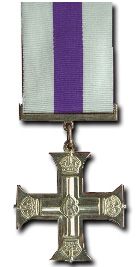
Shortly after on 4 February 1944 he was awarded the Military Cross (pictured) for “strong leadership and splendid courage for which he was recognised by every officer and man in his unit.” The citation also states that “With his unit he fought at Wau, Mubo, Bena Bena and the Ramu Valley. He performed great feats of courage in his attempts to evacuate wounded men. His skill in evading enemy positions and patrols in reconnaissance work was responsible for the collection of valuable data. On these patrols this officer has endured great hardships and shown devotion to duty to an extraordinary extent.”
Promoted to the rank of captain, Byrne continued to serve but on 12 January 1945 he received multiple wounds to the legs while in action in New Guinea with the 2/7 Commando Squadron. These injuries put an end to his war service and he was discharged on 16 June 1945.
Although Ted Byrne was continually listed as a member of Marrickville DCC, his injuries also meant the end of his cricket career and he never played with the club again.
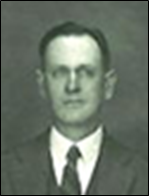
Joseph Henry McDOUGALL was born in 1903 and began his Sydney Grade Cricket career with Petersham, joining that club as a 23 year old in 1926-27. Within three years he was a regular member of the 1st Grade side as a spin bowling all-rounder and was on committee. However, a change of residence saw him qualify for Marrickville DCC which he joined in 1932-33. Over the following six years he was a regular performer in both 1st and 2nd grades with 8-90 in 1s and a score of 81 in 2s his best efforts. In that time he took 147 wickets and scored 878 runs in the two grades. For the three seasons after that he was happy to drop down to the 3rd and Shires teams to assist in the development of younger players.
McDougall was a lawyer by profession and became the club’s Honorary Solicitor in 1937 as well as taking a position on the Management Committee. He also served as a Delegate to the NSW Cricket Association.
In 1941 he stood down from all positions and at 38 years of age enlisted in the war effort through the RAAF. He served for three years and while little information is available about his time in the Air Force it is known he was at some stage on active duty in the Middle East. He was a Squadron Leader and received a MID (Mentioned in Despatches) honour before being discharged on 21 December 1945. He was not thereafter involved with the club and died at Eastwood on 6 September 1978 aged 75.
Petersham DCC
Geoffrey Edgar TAAFFE was born at Summer Hill on 6 May 1919. He joined Petersham DCC in 1938-39 and after starting in the Colts team finished in 3rd Grade where he hit a half-century in his total of 97. The following season produced no more than a 43 in 3rd Grade although he made one appearance in 2s for a score of 23.
Season 1940-41 however, brought out some of the great potential in the 19 year old who rattled up scores of 81 and 77 in a total of 274 in 2nd Grade. The result of those performances was that he finished the season in 1st Grade hitting a fine 61 in a total of 98 in six trips to the crease. But it was the following summer of 1941-42 where Geoffrey Taaffe confirmed he was a player of the future. Playing the whole season in 1st Grade he finished with 381 runs, second only to the inimitable Dudley Seddon who made 409. Taaffe also displayed his outstanding fielding ability snaring 13 catches, the most in the team.
But the promising cricket career of this exciting young batsman was put on hold prior to the 1942-43 season when he signed up with the Air Force as a Pilot Officer. Sent off to the RAAF no.2 Operational Training Unit at Mildura it was just a few months later on 21 January 1943 that the life of Geoffrey Edgar Taaffe came to a crashing end. While piloting a Wirraway aircraft in a mock combat exercise he collided with another Wirraway at about 7,000 feet sending both aircraft spiralling out of control. Of the four crew involved in the training routine only one was able to bail out leaving three dead including Geoffrey. He was just 23 years old.
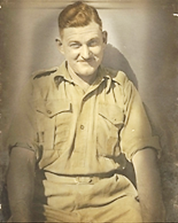
Walter Mervyn DORMAN was born at Leichhardt on 3 July 1905. He was a late starter in terms of cricket not joining Petersham until 1936-37 when he was 31. He played for the following four years in the lower grades and in the Shires competition. In his first season he established a record for the “B” Shires team (which was never broken) when he scored 118. His best season was in 1937-38 when he scored 316 in 3rd Grade including an innings of 74 which was the second highest in the side for the season. In his time with Petersham he totalled 949 runs.
Merv, as he was commonly known, had an interest in Army life and enlisted as a cadet in 1919 when he was just 14. This led to him joining the 2/12 Field Company, Royal Australian Engineers in 1940 just after the war broke out. However, he was captured by the Japanese and sent to work on the infamous Burma Railway along with approximately 60,000 Allied prisoners of war (POW). He survived this horrific experience and returned to POW camps in Singapore.
On the 4th September 1944, Merv was one of more than 1,300 POWs placed aboard the Japanese ship Rayuko Maru bound for Japan. On the 12th September 1944, the ship was torpedoed by a US submarine unaware that Allied POWs were on board. Over 1,100 POWs from the Rayuko Maru and the ship it was travelling with, Kachidoki Maru, perished. Merv survived this event and although American submarines later returned to rescue some POWs, Merv was one of the 136 survivors who were picked up by the Japanese ship Kibitsu Maru and transported to Japan.
In Japan, Merv and his fellow POWs were destined to see out the war working in Japanese mines and shipyards until the American Occupation Forces emancipated them in September 1944. Tragically, after all he had been through, Merv died in a hospital in Tokyo on the 21st May 1945. He missed out on his freedom by a few short months. Merv is buried in the Sydney War Cemetery at Rookwood Cemetery in Sydney.

Charles Roland NAPIER was born at Leichhardt on 19 March 1918. He joined Petersham in 1937-38 and played in the Shires team, going on to win the bowling average with 41 wickets at 9.87. That won him four matches in 3rd Grade where he took another seven wickets. Over the following three years the budding all-rounder alternated between 2nd and 3rd Grade with the occasional game in the Colts team. His best scores were 46 in Shires and 43 in 2nd Grade while he took 21 wickets at 15.57 and hit 261 with a top score of 69 not out in 3s in 1938-39.
On 11 October 1941 the 21 year old enlisted in the RAAF. Cricket opportunities thereafter were few and far between with a couple of matches in 3rd Grade his only appearances in 1941-42. He did manage however, a good spell in one game taking 3-39. That took his career tally to 80 wickets to go with his 669 runs. Unfortunately the youngster did not get to improve on those figures as his young life came to an abrupt end shortly after.
Promoted to Sergeant and a member of 22 Squadron, on 26 November 1942 Charlie was aboard a Douglas Boston aircraft nicknamed “Retribution” with nose art of an eagle dropping a bomb. When attempting to dive-bomb targets in the Buna, Papua, New Guinea area the aircraft exploded in mid-air. It was believed that a fragmentation bomb exploded in the fuselage when it was dropped. Charlie and his two crew members, Squadron Leader Kenneth McDonald of Victoria and Flight Officer Thomas O’Neill of South Australia were killed in the explosion.

Charles Roland Napier is second from the right in the photograph with the Douglas Boston. He was 24 years old.
Randwick CC
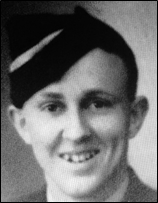
Noel Joseph Knight was born at Waverley on 14 August 1922 and joined the Randwick club in 1938-39. He was quickly identified as a youngster of considerable talent despite being only 16. He played in the Colts team and after four innings for 178 runs was promoted to 3rd Grade where he scored a total of 160 with a top score of 62. He also played a match in 2nd Grade while in the club’s Poidevin-Gray Shield team he hit scores of 60 and 40 in his overall aggregate of 144.
The youngster was the leading batsman in 3rd Grade the following 1939-40 season scoring 333 runs at an average of 37.00 with a top score of 92. His performances prompted the team captain to declare in his annual report that Noel “is a grand cricketer and will probably be a worry to some of the 1st Graders next season”. They were prophetic words indeed as the young Noel made his 1st Grade debut the following season scoring 60 runs with a highest score of 22 not out.
In 1940-41 Knight was the mainstay of the 2nd Grade batting scoring 226 runs while in the Poidevin-Gray Shield which he contested for the third time, he hit 173 with a top score of 67. And while he played a couple of times in the 1st X1 the following summer he continued to be a force in 2nd Grade where he scored 223 for the season which took his club record to 1,667 runs in four seasons.
Noel Knight did not play cricket in 1942-43. Prior to the season on 22 June 1942 he enlisted in the RAAF and was transferred to England for training. In May 1944 his parents received the kind of notification that all parents dreaded. Flight Sergeant Noel Knight was killed in an aircraft accident in Yorkshire, England on 10 May 1944. He was just 21 years of age.








